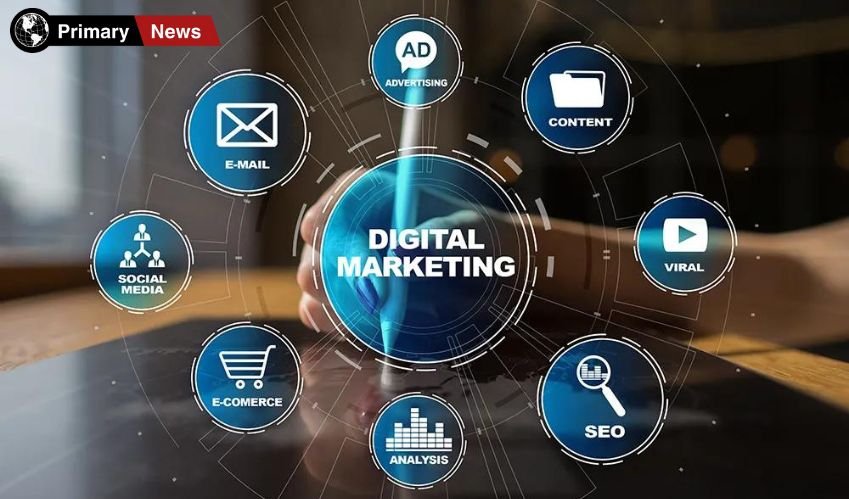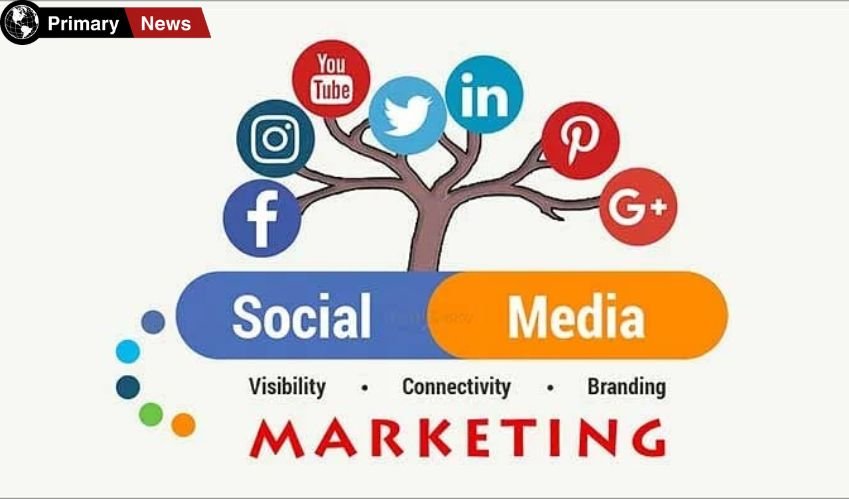What is Content Marketing?
Content marketing is a strategic marketing approach focused on creating, publishing, and distributing valuable, relevant, and consistent content to attract and engage a clearly defined audience. The goal is to drive profitable customer action by providing information that addresses the needs and interests of the target audience. Unlike traditional advertising, which often interrupts consumers with messages, content marketing seeks to provide useful and enjoyable content that naturally draws people in and builds trust over time.
At its core, content marketing revolves around storytelling. Businesses and brands use content to tell stories that resonate with their audience, fostering a connection that goes beyond mere transactional relationships. This approach can include a wide range of formats such as blog posts, articles, videos, infographics, podcasts, social media posts, and more. The key is to deliver content that is genuinely helpful and engaging, positioning the brand as a valuable resource and thought leader in its industry. it is a components of Digital marketing
Why is Content Marketing Important?

Builds Trust and Credibility: Content marketing helps establish a brand as an authority in its field. By consistently delivering high-quality content that addresses the pain points and interests of the audience, businesses can build trust and credibility. When consumers view a brand as knowledgeable and reliable, they are more likely to turn to it when they need products or services related to that expertise.
Improves SEO and Organic Reach: Search engines favor websites that regularly publish fresh, relevant, and valuable content. Content marketing plays a crucial role in improving search engine optimization (SEO) by providing material that can rank well for targeted keywords. This, in turn, increases organic traffic to the website, helping it reach a broader audience without relying solely on paid advertising.
Drives Customer Engagement: Engaging content encourages interaction and discussion, fostering a sense of community around the brand. By inviting comments, shares, and feedback, content marketing creates opportunities for meaningful engagement with the audience. This interaction not only helps in understanding customer preferences but also strengthens the relationship between the brand and its audience.
Supports Lead Generation and Conversion: Effective content marketing attracts potential customers and guides them through the buyer’s journey. By offering valuable content at each stage – from awareness to consideration to decision – businesses can nurture leads and move them closer to making a purchase. Content such as whitepapers, case studies, and product comparisons can be particularly effective in influencing buying decisions.
Cost-Effective Marketing Strategy: Compared to traditional advertising, content marketing can be more cost-effective. While it requires an investment of time and resources to create high-quality content, the long-term benefits often outweigh the costs. Once published, content continues to generate traffic, leads, and engagement, providing ongoing value without the need for continuous spending.
Enhances Brand Awareness: Content marketing allows brands to showcase their personality, values, and unique selling propositions. By consistently delivering content that aligns with the brand’s voice and message, businesses can enhance their brand awareness and differentiate themselves from competitors.
How Content Marketing Works

Understanding the Audience: The first step in content marketing is to thoroughly understand the target audience. This involves creating detailed buyer personas that outline the demographics, interests, pain points, and behaviors of the ideal customers. By understanding what the audience cares about, businesses can tailor their content to meet those needs effectively.
Setting Clear Goals: Content marketing should be guided by clear objectives. Common goals include increasing brand awareness, driving website traffic, generating leads, improving customer retention, and boosting sales. Having specific, measurable goals helps in designing a content strategy that aligns with business objectives and provides a way to track progress and success.
Creating a Content Strategy: A content strategy outlines the plan for creating, publishing, and managing content. It includes decisions about the types of content to produce, the topics to cover, the formats to use, and the channels to distribute the content. A well-defined content strategy ensures that all efforts are cohesive and aligned with the overall marketing goals.
Producing High-Quality Content: Quality is paramount in content marketing. Content should be well-researched, well-written, and valuable to the audience. It should provide actionable insights, answer questions, solve problems, or entertain the audience. Visual elements such as images, infographics, and videos can enhance the appeal and effectiveness of the content.
Distributing the Content: Creating great content is only half the battle; it must also be effectively distributed to reach the intended audience. This involves selecting the right channels, such as social media platforms, email newsletters, blogs, and third-party websites. Leveraging SEO techniques can also help in ensuring that the content is discoverable by those searching for related information.
Engaging with the Audience: Content marketing is not a one-way street. Engagement is a crucial component, and businesses should actively seek to interact with their audience. This can include responding to comments, participating in discussions, asking for feedback, and encouraging shares. Engaging with the audience builds a sense of community and deepens the connection with the brand.
Measuring and Analyzing Performance: To determine the effectiveness of content marketing efforts, it is essential to measure and analyze performance. Key metrics to track include website traffic, social media engagement, lead generation, conversion rates, and ROI. Analyzing these metrics helps in understanding what is working and what needs improvement, allowing for data-driven adjustments to the content strategy.
How to Do Content Marketing Step by Step

Step 1: Define Your Goals: Start by identifying what you want to achieve with your content marketing efforts. Your goals should be specific, measurable, achievable, relevant, and time-bound (SMART). Whether you aim to increase brand awareness, generate leads, or boost sales, having clear objectives will guide your strategy and help measure success.
Step 2: Understand Your Audience: Create detailed buyer personas to understand your audience’s needs, preferences, and behaviors. Conduct surveys, interviews, and market research to gather insights. Knowing your audience will help you create content that resonates with them and addresses their pain points.
Step 3: Develop a Content Strategy: Outline your content marketing plan, including the types of content you will create, the topics you will cover, and the channels you will use for distribution. Your strategy should align with your goals and audience insights. Decide on the frequency of content publication and create an editorial calendar to stay organized.
Step 4: Create High-Quality Content: Focus on creating valuable, relevant, and engaging content. Use a mix of formats such as blog posts, videos, infographics, and podcasts to cater to different preferences. Ensure your content is well-researched, well-written, and visually appealing. Consistency in quality and voice is key to building trust with your audience.
Step 5: Optimize for SEO: Incorporate SEO best practices to improve the discoverability of your content. Conduct keyword research to identify relevant terms and phrases your audience is searching for. Optimize your content for these keywords, and pay attention to on-page SEO elements such as meta titles, descriptions, and headers.
Step 6: Distribute Your Content: Choose the right channels to distribute your content based on where your audience spends their time. This may include social media platforms, email newsletters, your website, and third-party sites. Tailor your content for each channel and leverage analytics to track performance and optimize your distribution strategy.
Step 7: Engage with Your Audience: Encourage interaction and engagement with your content. Respond to comments, participate in discussions, and ask for feedback. Building a sense of community around your brand fosters loyalty and deepens the connection with your audience.
Step 8: Measure and Analyze Performance: Track key performance indicators (KPIs) to measure the success of your content marketing efforts. Common KPIs include website traffic, social media engagement, lead generation, conversion rates, and ROI. Use analytics tools to gather data and gain insights into what is working and what needs improvement.
Step 9: Adjust and Improve: Content marketing is an ongoing process. Continuously analyze your performance data and make adjustments to your strategy as needed. Experiment with different content types, topics, and distribution channels to find what resonates best with your audience. Stay updated on industry trends and best practices to keep your content marketing efforts effective.
Future with Content Marketing

Rise of Personalization: As technology advances, the ability to deliver personalized content will become more sophisticated. Brands will use data and AI to create highly tailored content experiences that resonate with individual preferences and behaviors. Personalization will enhance user engagement and improve the effectiveness of content marketing efforts.
Increased Use of Video Content: Video content continues to gain popularity, and its importance in content marketing will only grow. With the rise of platforms like YouTube, TikTok, and Instagram Reels, brands will increasingly use video to tell stories, showcase products, and engage with their audience. Live streaming and interactive video content will also become more prevalent.
Voice Search Optimization: With the growing adoption of voice-activated devices like smart speakers and virtual assistants, optimizing content for voice search will become crucial. Content creators will need to focus on natural language and conversational keywords to ensure their content is discoverable through voice search queries.
Focus on Quality and Authenticity: As the digital landscape becomes more saturated with content, quality and authenticity will be paramount. Audiences are becoming more discerning and seek genuine, valuable content that stands out from the noise. Brands will need to invest in creating high-quality content that reflects their values and builds trust with their audience.
Integration of AI and Automation: Artificial intelligence and automation will play a significant role in content marketing. AI-powered tools can assist with content creation, optimization, and distribution, making the process more efficient and scalable. Automation can streamline repetitive tasks, allowing marketers to focus on strategy and creativity.
Growth of Interactive Content: Interactive content, such as quizzes, polls, surveys, and interactive infographics, will become more popular. This type of content engages the audience and provides a more immersive



